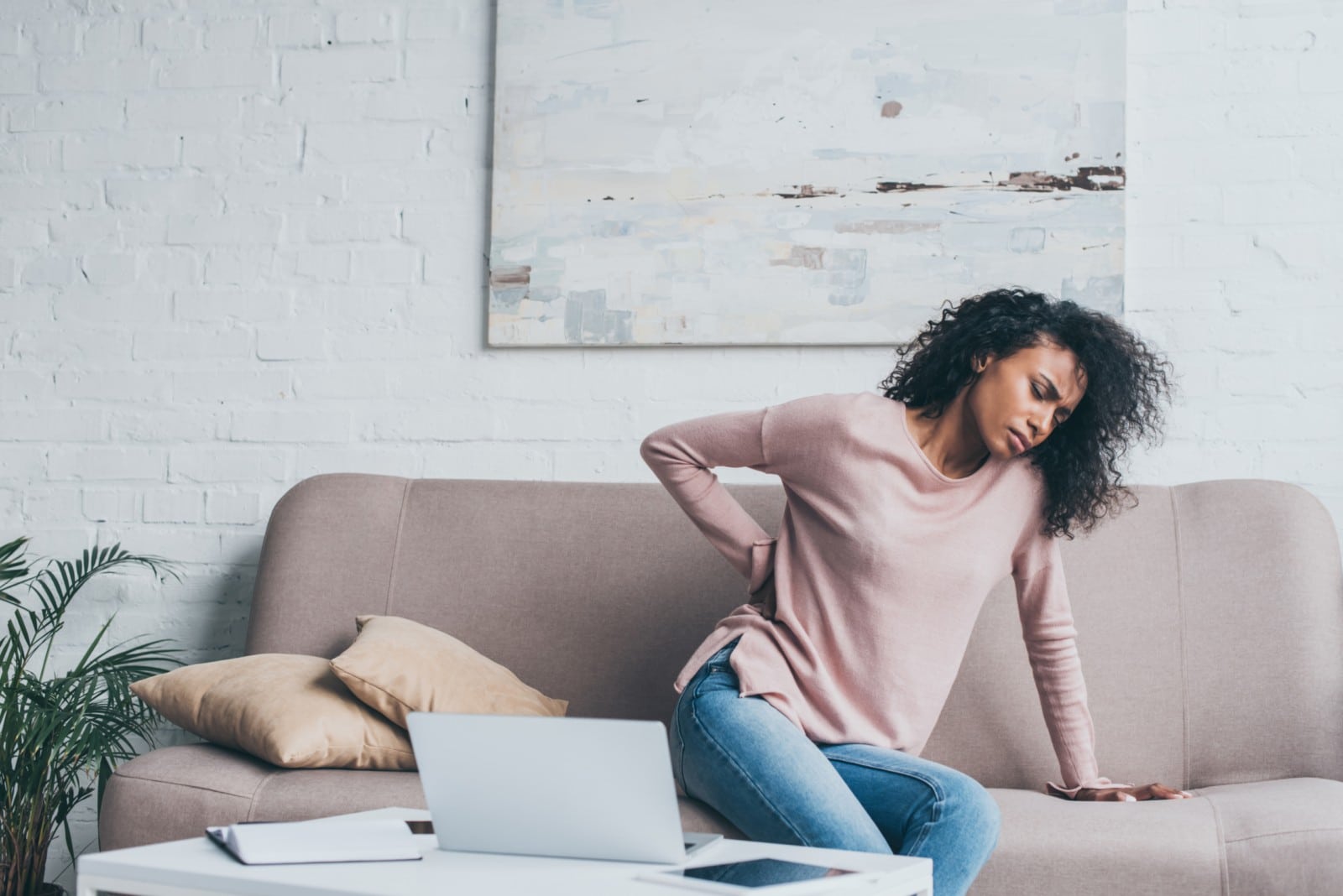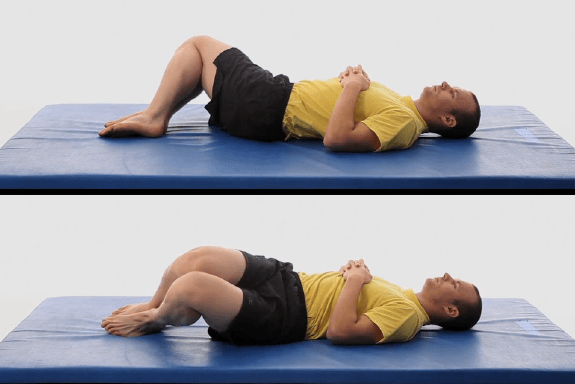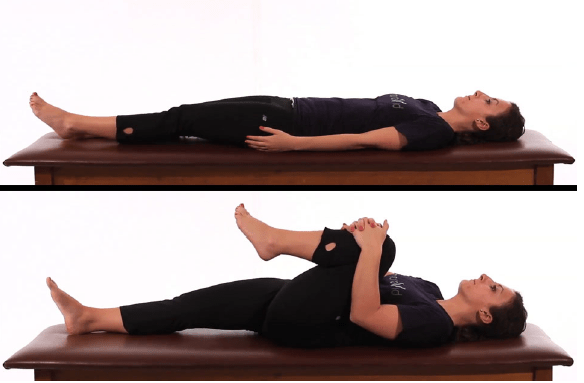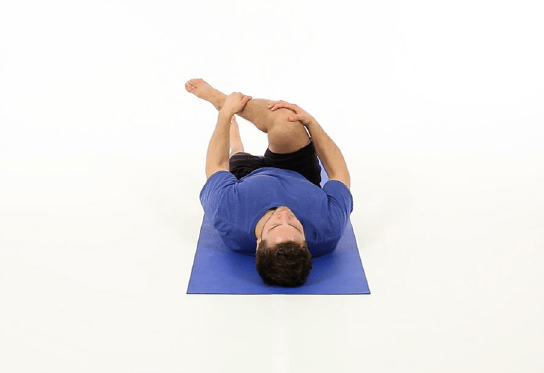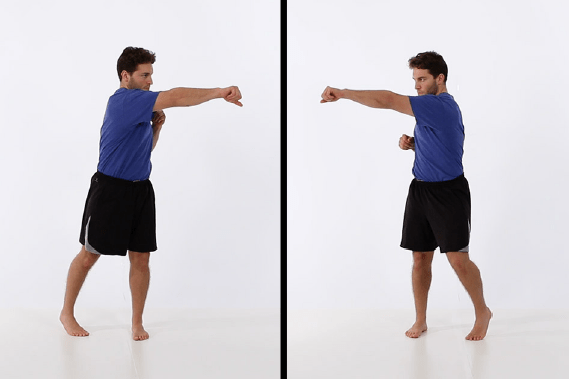With so many of us working from home full time or taking advantage of flexible work schedules, many have found a little bit of extra time around the house to work on projects—which is great, until you feel that tweak, pop, or strain in your lower back from stressing muscles that aren’t used to working.
If this hurt back situation is one you’re feeling at the moment, you’re certainly not alone. According to Torrey Foster, PT, DPT, OCS, FAFS, CSCS, at Spooner Physical therapy, “Approximately on average, 80% of people at some point in their respective lifetimes will have an episode of low back pain, which is a staggering number. And people that have acute episodes of low back pain, if they don’t receive the right treatment, have a higher risk of having chronic low back pain after six weeks.”
Understanding Lower Back Pain
Why does the lower back have it so bad, anyway? “It’s not necessarily the lower back’s fault,” Torrey says. Turns out the muscle groups above or below the lumbar area—such as your hips or your hamstrings—likely have limitations, tightness, and weaknesses. “So what gets caught in the middle is the low back. We want to blame the low back.”
Even conditions like degenerative disk disease or a herniated or bulging disk, for example, are the result of gravity’s pull on the spine over time. If muscles and joints were strong enough in the first place to provide the lower back with the support it needs, then gravity’s pull wouldn’t be so detrimental.
But without that critical support system, your back will ultimately hit a “tipping point.” And that’s when—pop, tweak, oof—you suddenly feel pain. It’s not that the underlying issue came on suddenly; it’s likely been there for some time. But, put simply, your back just couldn’t take it anymore.
What to Do If You Have Lower Back Pain
What should you do if this happens to you? Torrey points out that Spooner Physical Therapy is an essential business and is still open to help. (You can read more about how we’re addressing COVID-19 here.) If coming into the clinic isn’t a possibility, we are serving our patients via our newly launched telehealth option.
Either way, your physical therapist is your musculoskeletal specialist, with the exact know-how to teach your body to overcome the pain. “We want to give people the comfort, the capability, and the confidence to do their daily activities and to do the things they want to do,” Torrey says. “It isn’t a cookie cutter situation. We look at the individual and what their activities and movement capabilities are, then give them individualized strategies to help them accomplish their goals, have the best quality of life possible, and maximize their potential.”
Sounds great, right? But if you’re in a position where you’re unable to come into the clinic or even do telehealth right now, you may be wondering if there’s anything you can do to find relief at home.
Torrey outlines a few simple procedures that anyone can do to calm pain in the low back and start the healing process, until they can safely return to the physical therapy clinic.
Finding Relief at Home for Lower Back Pain
Step 1: Use cold to reduce the inflammation
“Pain is a symptom of the inflammatory process. So if it’s an acute low back pain, commonly, you want to reduce inflammation,” Torrey explains.
In the first few days following the onset of your pain, you’ll want to use cold therapy, such as a cold gel pack. If it doesn’t come with a cover, make sure to put it in a pillowcase or something else that will provide a protective barrier between your skin and the cold pack.
Find a position that feels comfortable to you. You might try lying on your back with your knees bent, or lying on your stomach. Torrey says that everyone is different, and you’ll want to find the preferred position for you. Once you do, apply the cold pack to your low back for 10 to 20 minutes.
Step 2: Use heat to prepare your muscles for movement.
After the first few days, Torrey says it’s time to implement heat as part of your feel-better strategy. Heat increases the temperature of your muscles slightly, which has two effects: For one, it feels soothing. And for another, it prepares your muscles for a return to movement by increasing blood flow to the injured area.
To apply heat properly, use a heating pad (such as an electric option that allows you to control the heat). Apply heat for five to 10 minutes at a time, starting first thing in the morning. This will prepare your back for the movement to come in your day (including the stretches and exercises in the next step).
Your back will tighten up as you go throughout your daily routine, so you’ll want to apply heat intermittently during the day for five to 10 minutes a time to increase your comfort level.
Torrey recommends alternating hot and cold therapy throughout the day as needed, depending on your activities. For example, implementing a regimen like the following can bring a lot of relief:
- Five to 10 minutes of heat therapy first thing in the morning.
- Three to five minutes of exercises (see Torrey’s recommended exercises below).
- Start your day: Get your coffee, jump online or read the newspaper, or whatever it is you usually do first thing.
- Five to 10 minutes of heat therapy midday if your back is feeling uncomfortable again.
- Repeat three to five minutes of exercises.
- Midday activity, such as going for a walk or taking a needed trip to the grocery store.
- Come home and ice to reduce the inflammation.
Step 3: Reintegrate movement using some simple exercises
“Motion is the lotion” is one of the favorite phrases here at Spooner Physical Therapy. Why? Reintegrating movement into the body in the right way is what leads to healing. Stopping movement altogether, on the other hand, only leads to bigger problems.
“What can happen is when people stop moving because of the pain, tissue gets tight, tissue gets weak, and then when you try to use it, it’s even tougher,” Torrey says. “So the biggest thing is, we want to get away from the fear of movement. And we want to find out what movement is successful and comfortable.”
Here are Torrey’s recommendations for simple exercises you can do at home. He does note this caveat: “There is no one perfect stretch or one perfect exercise. Every individual is different.”
Try These Exercises To Relieve Lower Back Pain
Lower Trunk Rotations
Lie with both feet placed flat on a bed and your knees bent. Keeping your shoulders flat on the bed, allow your knees to slowly fall together to the side at a comfortable distance, rotating at your torso/lower back as you do so. Return to the starting position and then allow your knees to the opposite side to a distance you can comfortably control.
Reps: 10 to 20
Hold: 2 to 3 seconds
Times per day: 2 times
Single Knee to Chest
Begin by lying on your back on a bed. Hold one knee with both hands or place your hands behind the thigh on the side you wish to stretch. Pull the knee towards your same shoulder/chest.
Sets: 1 to 2 per side
Hold: 15 to 30 seconds
Times per day: 2 times
Piriformis Stretch
Begin lying on your back on a bed with your legs straight. Lift one leg so you can grasp the knee. Place the same side hand on the outside of the knee and your other hand on your shin. Perform the stretch by pulling with both hands toward your opposite shoulder. You should feel a stretch in your same side buttock/glute area.
Sets: 1 to 2 per side
Hold: 15 to 30 seconds
Times per day: 2 times
Cross Body Reaches
Begin in a standing position, with both feet shoulder-width apart. Slowly reach across your body with your right hand at chest height. Then slowly reach across your body with your left hand. Make sure to get your entire body involved with each reach, particularly your hips.
Sets: 1
Reps: 10 to 20
Times per day: 2
If you have any questions about these exercises, or would like to talk to a physical therapist, we’re here to provide individualized strategies that are just right for you. We want to get you moving comfortably and confidently again!
Learn more about Spine Rehabilitation at Spooner Physical Therapy. Ready to schedule an appointment? Click Here to schedule an appointment or complimentary movement screen with a Spooner physical therapist at one of our locations throughout the valley.

